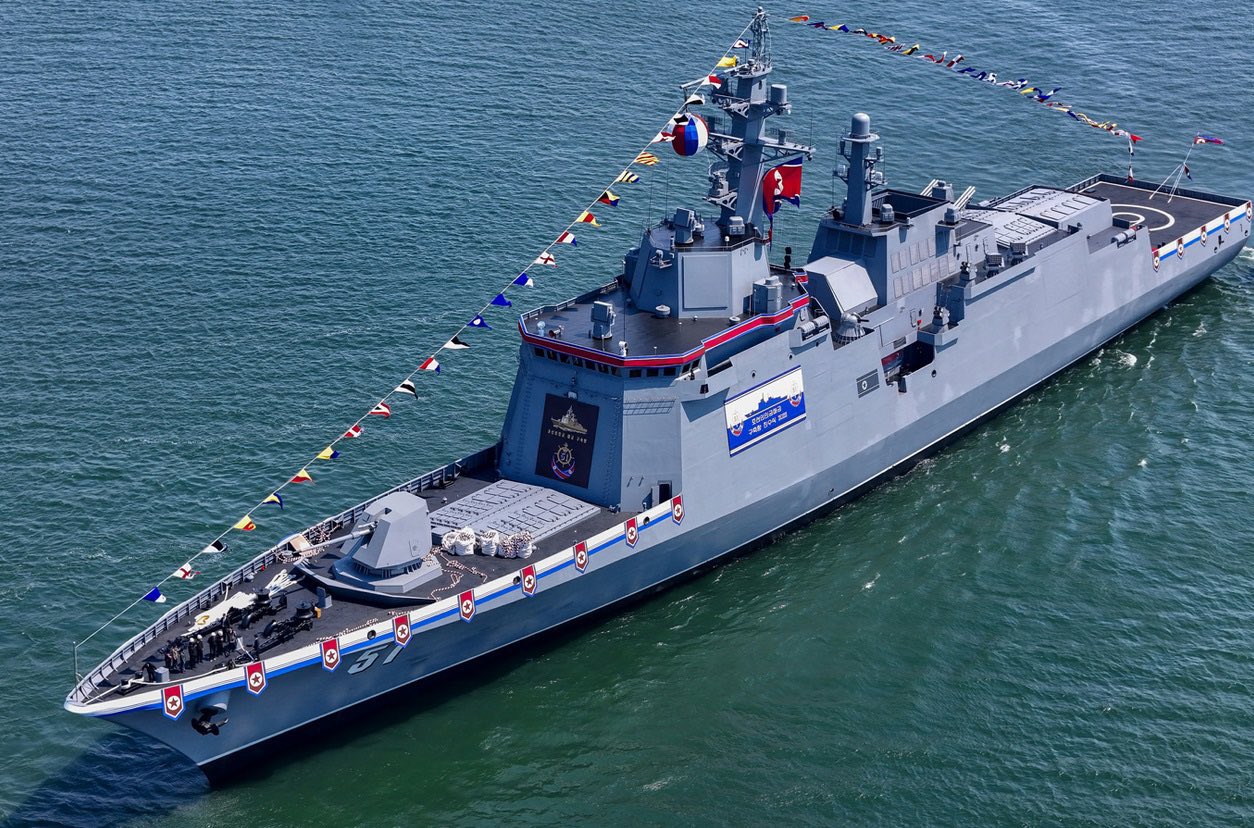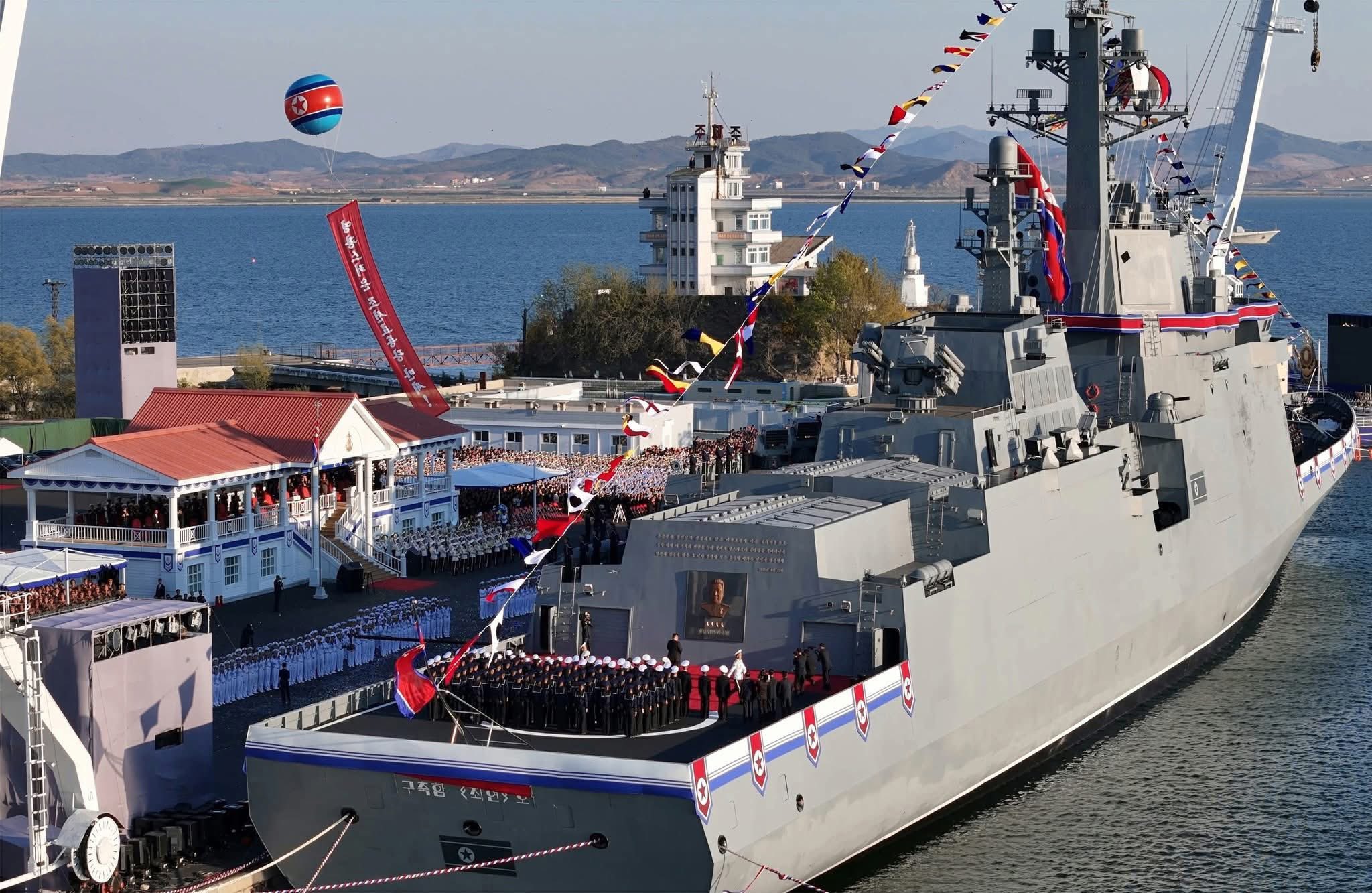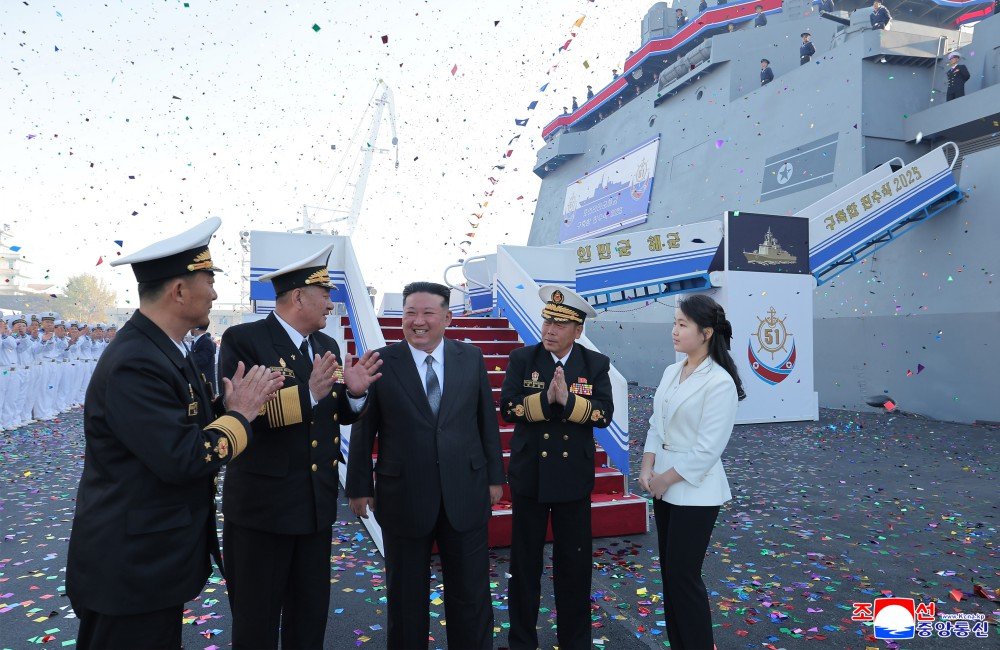North Korea Unveils 5,000-Ton Missile Destroyer as Pyongyang Pursues Blue-Water Naval Power
The 5,000-ton warship, according to senior figures within the ruling Workers’ Party of Korea, is said to be equipped with "the most powerful weapons" the nation has ever fielded and was constructed over a rapid timeline of 400 days, utilizing “domestic strength and technology” as part of Kim Jong Un’s strategic vision for self-reliant military modernization.
(DEFENCE SECURITY ASIA) – North Korea has formally launched its largest and most ambitious warship to date, described as a “multi-purpose destroyer,” during a high-profile ceremony held along the country’s western coastline, underscoring Pyongyang’s determined push to expand its maritime strike capabilities amid escalating regional tensions.
The 5,000-ton warship, according to senior figures within the ruling Workers’ Party of Korea, is said to be equipped with “the most powerful weapons” the nation has ever fielded and was constructed over a rapid timeline of 400 days, utilizing “domestic strength and technology” as part of Kim Jong Un’s strategic vision for self-reliant military modernization.
North Korean state media KCNA reported that leader Kim Jong Un, presiding over the ceremony, confirmed that the newly launched vessel would be formally handed over to the Korean People’s Navy and is expected to enter full operational service by 2026, marking a milestone in the regime’s bid to transform its coastal defence force into a blue-water navy.
The launch, which took place on April 25 at the Nampho naval shipbuilding facility, was hailed by KCNA as a landmark event initiating a new era of “great Kim Jong Un-style fleet building,” with Vice-Admiral Pak Kwang Sop emphasizing the symbolic and strategic significance of the occasion.
The warship has been designated the “Choe Hyon-class,” named after Choe Hyon, a revered anti-Japanese revolutionary fighter, reflecting North Korea’s tradition of intertwining revolutionary mythology with contemporary military advancements to bolster nationalistic fervor.
Earlier in April, Reuters reported, based on commercial satellite imagery analysis, that this new class of warship appeared to house dozens of vertical launch cells (VLS), enabling it to carry a diverse array of indigenous ballistic and cruise missiles, a capability that substantially elevates North Korea’s ability to threaten targets at sea and on land.
Military analysts assess that the introduction of a 5,000-ton Choe Hyon-class destroyer signals North Korea’s intent to strengthen its maritime deterrence posture in response to growing trilateral military cooperation between the United States, South Korea, and Japan, including enhanced naval exercises and the deployment of carrier strike groups in Northeast Asian waters.

In the evolving landscape of 21st-century naval warfare, fielding a warship with substantial VLS capacity allows North Korea to diversify and extend its strike options, from launching precision land-attack missiles at enemy infrastructure to deploying potent anti-ship missiles capable of challenging regional maritime supremacy.
The Choe Hyon-class is not merely a platform for missile delivery but represents a quantum leap in the Korean People’s Navy’s ability to maintain sustained operations at sea, significantly complicating adversary efforts to detect, track, and pre-emptively neutralize North Korean strike assets.
The operational deployment of such a heavyweight vessel also reflects Pyongyang’s ambition to transition from a traditionally coastal defence-centric force to a limited blue-water navy, seeking operational reach beyond the immediate Korean Peninsula into the broader Western Pacific.
North Korea’s development of the Choe Hyon-class coincides with South Korea’s expansion of its own naval fleet, including the commissioning of new Aegis-equipped destroyers, while Japan enhances its maritime capabilities with the retrofitting of Izumo-class helicopter destroyers into light aircraft carriers capable of operating F-35B stealth fighters.
Against this backdrop of accelerating regional naval armament, the Choe Hyon-class serves a dual role — both as a tangible escalation of North Korea’s hard power and as a psychological instrument of strategic signalling towards adversaries and domestic audiences alike, showcasing resilience in the face of intensifying economic sanctions and diplomatic isolation.
Strategically, the vessel’s launch underscores Kim Jong Un’s broader objective to position North Korea as a credible asymmetric maritime challenger, mirroring its successful transition to a dual-capable nuclear and missile state over the past decade.

At a time when the security architecture of the Indo-Pacific is becoming increasingly contested, the addition of a warship like the Choe Hyon-class introduces new operational dilemmas for regional planners, particularly regarding missile defence and maritime domain awareness.
Although Pyongyang has yet to publicly disclose the full specifications of the Choe Hyon-class, Western intelligence and satellite imagery suggest the ship is heavily armed and purpose-built to execute multi-domain missions, ranging from conventional missile strikes to limited area-denial operations.
Among the principal weapon systems believed to be aboard the 5,000-ton vessel are:
1. Land-Attack Missiles
The Choe Hyon-class is likely equipped with an array of medium-range land-attack ballistic missiles, including the KN-23 and KN-24, both capable of executing precision strikes against enemy airbases, ports, and command centers from maritime launch points.
2. Anti-Ship Missiles
The destroyer is expected to carry variants of the Pukguksong series or KN-01 anti-ship cruise missiles, designed to engage high-value naval targets such as aircraft carriers, amphibious assault ships, and heavily defended surface combatants.
3. Air Defense Systems
In terms of air defence, the vessel is anticipated to integrate close-in weapon systems (CIWS) and possibly medium-range surface-to-air missiles (SAMs), aimed at providing layered protection against hostile aircraft, drones, and incoming missiles, although the exact models remain undisclosed.
4. Naval Gunfire Support
A main gun — estimated between 76mm and 100mm calibre — is expected to provide the vessel with offensive and defensive surface engagement capability, critical for littoral and open-sea operations where rapid reaction to threats is vital.

5. Electronic Warfare and Sensor Suites
The Choe Hyon-class is believed to incorporate modern electronic warfare systems for jamming, deception, and countermeasures, as well as advanced radar and sonar arrays to enhance situational awareness and defend against submarine and missile threats, though still technologically inferior to Western counterparts.
Viewed in totality, the Choe Hyon-class destroyer represents a pivotal development in North Korea’s military doctrine — offering Pyongyang a flexible, survivable, and mobile platform capable of conducting a range of missions across increasingly contested maritime domains.
Its construction and planned deployment mirror Kim Jong Un’s ongoing evolution of North Korean military power: a move from static deterrence toward dynamic, multi-domain, force projection aimed at complicating U.S. and allied operations across the broader Indo-Pacific region.
— DEFENCE SECURITY ASIA


